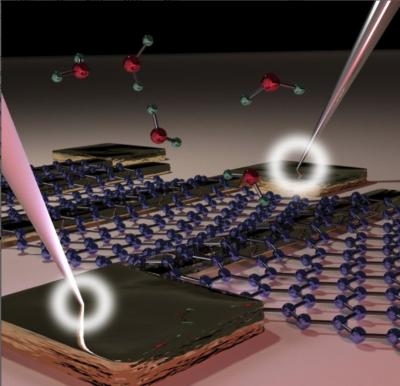A team of European researchers from the KTH Royal Institute of Technology, Chalmers University of Technology and Uppsala University in Sweden, along with scientists from RWTH Aachen University and AMO GmbH in Germany, has discovered that when graphene is integrated with the metal of a circuit, contact resistance is not impaired by humidity. This finding may help to develop new sensors with a significant cost reduction.

To achieve efficient sensors, graphene needs to make good electrical contacts when integrated with a conventional electronic circuit. Such proper contacts are crucial in any sensor and significantly affect its performance. But a common problem is that graphene is sensitive to humidity, to the water molecules in the surrounding air that are adsorbed onto its surface. The H2O molecules change the electrical resistance of the graphene material, which introduces a false signal into the sensor.
The study has been carried out experimentally using graphene together with gold metallization and silica substrates in transmission line model test structures, as well as computer simulations.
"By combining graphene with conventional electronics, you can take advantage of both the unique properties of graphene and the low cost of conventional integrated circuits." says Quellmalz, "One way of combining these two technologies is to place the graphene on top of finished electronics, rather than depositing the metal on top the graphene sheet."
As part of the European CO2-DETECT project, the authors are applying this new approach to create the first prototypes of graphene-based sensors. More specifically, the purpose is to measure carbon dioxide (CO2), the main greenhouse gas, by means of optical detection of mid-infrared light and at lower costs than with other technologies.
In addition to the KTH Royal Institute of Technology, the companies SenseAir AB from Sweden and Amo GmbH from Germany are likewise participants in the CO2-DETECT project, as is the Catalan Institute of Nanotechnology (ICN) from Barcelona.